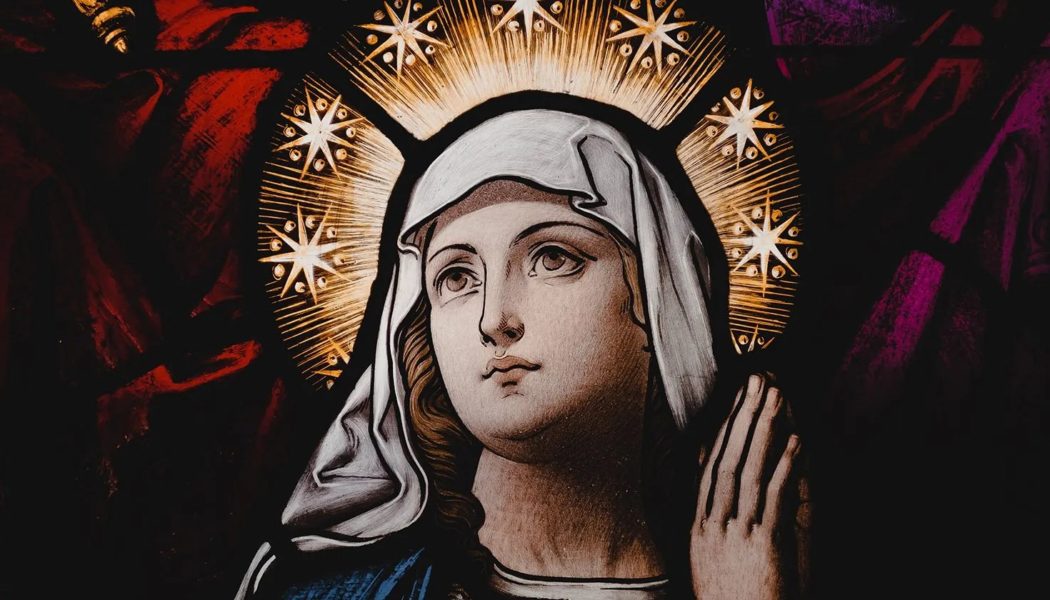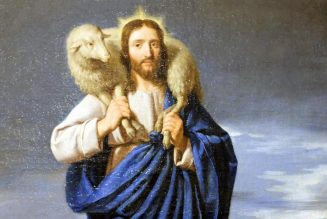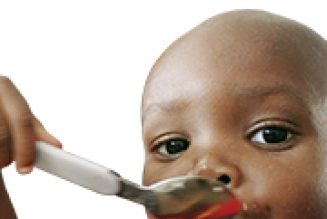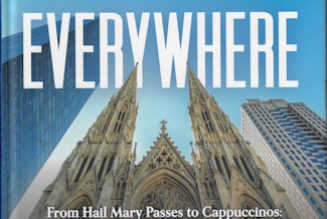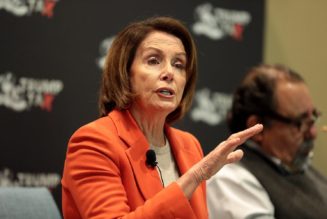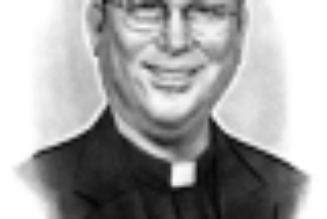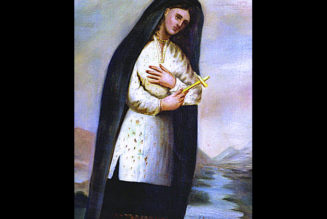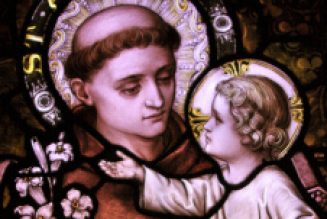
The Mother of God is the singular, unique, unrepeatable, irreproachable saint who brought Jesus Christ, God himself, into the world and that’s why we celebrate her on the Octave Day of Christmas Solemnity of the Blessed Virgin Mary, Mother of God.
But we can’t avoid an awkward fact that Protestant apologists love to bring up: In three of the Gospels, Jesus himself keeps her waiting outside and says that we are each meant to be his mother.
Mark tells the story this way: “A crowd was sitting around him, and they said to him, ‘your mother and your brothers are outside, seeking you.’” Elsewhere, Mark names Jesus’s “brothers”, showing that these are not siblings but relatives, as the word was sometimes used then. The story continues: “And looking about at those who sat around him, he said, ‘Here are my mother and my brothers! For whoever does the will of God, he is my brother and sister and mother.’”
So, which is it? Is Mary the unique mother of God or are we all just as good as she is?
The Gospel shows us that Mary is both the sole object of our special devotion and the model for the role each of us is meant to share.
January 1 is the Octave Day of Christmas, eight days after the celebration of the Nativity. All week, the Eucharistic Prayer has treated each day as Christmas Day but the Octave Day is Christmas II, a second solemnity of Christmas.
That fact alone shows the singularity of Mary. The Octave Easter Day, Easter Sunday II, is a second day to celebrate what Jesus did, but Christmas Sunday II celebrates what Mary did. Of course, Jesus is still the star of the show — he is the one the shepherds run to see, and he receives a name bestowed by an angel.
But there are two people involved in a birth, and today, we look to the mother. Joseph is mentioned, but he is what every dad is at a birth: A supporting character, a helper at best but often merely in the way. And what do we hear about Mary? She “kept all these things, reflecting on them in her heart.”
This is, first of all, Luke’s attribution of the source of his story. He is telling us that this account comes from Mary herself. But it is also a phrase meant to tell us what Mary is like: She is someone who contemplates the truths of the faith and ponders the things she experiences.
Mary is thus like Mary Bailey in It’s a Wonderful Life. As Clare Coffey and others have pointed out, Mary Bailey makes all the great events of George Bailey’s life possible. It is she who recognizes George’s true potential, then sacrifices for him — first giving up her honeymoon money, then making a home for him, and then gathering people to pray and donate money to save him. She is the secondary character who makes the hero’s victory possible. Just like the Blessed Virgin Mary.
But how is each of us a Mary to Jesus? The Shepherds were the first to find out.
Think about these shepherds for a second. Sheep that were kept in the hill country of Bethlehem, a 90-minute downhill walk to Jerusalem, were probably meant to join the tens of thousands of Passover lambs killed in sacrifice to God at the Temple, as Father Dwight Longenecker and others have pointed out. The Jewish people would have fully appreciated that they were raised in the City of David, who was the shepherd king.
These lambs were going to commemorate the great night that, as Moses foretold, God spared the Israelites’ firstborn sons from death led them out of slavery.
Now, these shepherds are visited by an angel on another great night, and told to stop looking after the Passover sheep and turn their gaze to “the infant lying in the manger.” He is none other than the Lamb of God, Jesus, the firstborn son of God, whose death leads us all out of slavery.
Joseph and Mary were the keepers of the Lamb of God in the way the shepherds were the keepers of the lambs of the Temple.
The shepherds saw the law and the prophets fulfilled in Mary. We see it fulfilled in us.
After seeing the infant in the arms of his mother, “the shepherds returned, glorifying and praising God for all they had seen.” In Mary, they saw the great fulfillment of exactly what the great blessing of the Israelites called for in our first reading:
- “The Lord bless you and keep you!” Moses instructed the priests to pray, and here was Mary, blessed by the Father and kept safe for the Son.
- “The Lord let his face shine upon you, and be gracious to you!” the blessing continued, and here, the face of God himself shone on Mary, full of grace.
- “The Lord look upon you kindly and give you peace!” said the blessing, and here Mary is attended by angels singing “Peace on earth!”
We now know that this blessing isn’t Mary’s alone, however. It is for all of us. We pray Psalm 67 at Mass: “May he let his face shine upon us,” all of us. “May your way be known upon earth among all nations,” we pray, including our nation. “May the people praise you, O God, may all the people praise you!” we continue. “May all the ends of the earth fear him!”
We are praying that we may each receive the blessing Mary received first.
St. Paul spells out another blessing we give and receive in Christ: Adoption by God himself.
“When the fullness of time had come, God sent his Son, born of a woman,” he writes in the Second Reading, “so that we might receive adoption as sons.”
He adds: “God sent the Spirit of his Son into our hearts, crying out ‘Abba, Father!’ So you are no longer a slave but a son, and if a son, then also an heir, through God.”
Everyone who is baptized has been adopted as a son of God. That means the Church has been a second Mary to us, and that means we have been Mary to others. Everyone who has helped bring a child to be baptized has brought an adopted son or daughter into the family of God, acting as Mary did at Bethlehem: A secondary character who makes the hero’s victory possible.
And make no mistake: We are truly adopted sons of God. The Gospels preserve Jesus’s Aramaic speech patterns in a few places, probably because his followers fondly remember the way he said “Talitha koum!” for “Little Girl get up!” and “Ephphatha” for “Be opened!” St. Paul remembers another one here: “Abba, Father!” — and he says that as adopted children, we can have the same familiarity with the Father that Jesus had when he cried out “Papa! Father!”
Last, consider the many titles of the Blessed Mother, and you’ll see how she is simultaneously both unique and how we are like her.
I love the many titles the Eastern Churches use for Mary. The Coptic Church in America lists these. Think of how they relate to each of us.
- Jacob’s Ladder — Mary is that place where heaven and earth meet and mingle. Our sacraments are the place God comes to join us today.
- Golden lampstand — The Madonna and Child in art is an image of Mary holding aloft the Light of the World. The Monstrance is a new golden lampstand, a new Mary, showing us Jesus.
- The manna pot — The Israelites stored the bread from heave; Mary held the Bread of Life. Our tabernacles hold the Bread of Life; but then so do we when we receive communion.
- Burning bush — Mary held the” all-consuming fire” of God but, like Moses saw in the burning bush, was not consumed. In communion, we also receive almighty God in all of his majesty but we are not consumed.
- Second heaven — Heaven is where Christ is, and that was Mary, as the angels and shepherds bore witness. We begin our heaven on earth when we recognize Jesus Christ, Emmanuel, God-with-us.
- Theotokos — Mary was the God bearer, carrying Christ in her womb. However briefly, doesn’t each of us bear Christ back to our pew?
So pray today that you can join Mary in her great vocation of bringing Jesus Christ into the world. And pray that Our Lady, Mother of God, will accompany the Church in the New Year.
Join Our Telegram Group : Salvation & Prosperity
